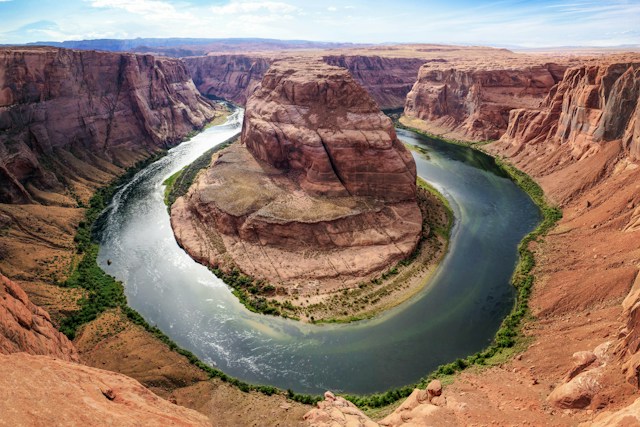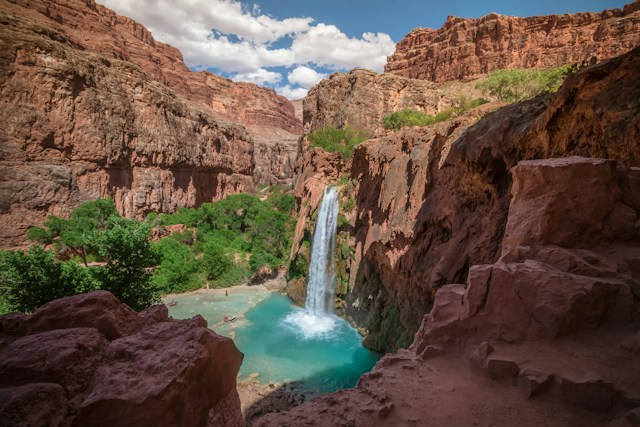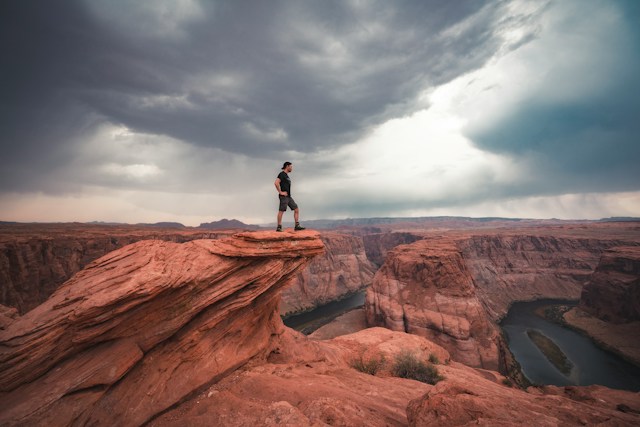Introduction:
In the heart of the American Southwest lies a geological masterpiece that has captivated the imaginations of explorers, adventurers, and nature enthusiasts for centuries—the Grand Canyon. Carved by the mighty Colorado River over millions of years, this colossal chasm stands as a testament to the Earth’s geological history and offers a breathtaking showcase of natural beauty. Join us as we embark on a journey to discover the Grand Canyon, a true wonder of the natural world.

- A Geological Masterpiece: Unraveling the Layers of Time
The Grand Canyon is a geological wonder that spans over 277 miles, with its mesmerizing rock formations revealing nearly two billion years of Earth’s history. The exposed layers of sedimentary rock, carved by the erosive forces of wind and water, tell a story of ancient seas, shifting landscapes, and the slow but relentless work of nature.
- Vast and Varied Landscapes: A Feast for the Eyes
As visitors gaze into the vast expanse of the Grand Canyon, they are treated to a visual feast of colors, shapes, and textures. The canyon’s intricate network of ridges, plateaus, and spires showcases a palette ranging from rich reds and oranges to deep purples and subtle greens. Sunrise and sunset cast a magical glow on the canyon, transforming it into a canvas of ever-changing hues.

- Colorado River: The Architect of the Canyon
The Grand Canyon owes its existence to the relentless flow of the Colorado River. Over millions of years, the river has carved its way through the rock, creating the deep and intricate canyon we see today. Rafting along the Colorado River offers a unique perspective, allowing adventurers to witness the canyon’s grandeur from the bottom up.
- Breathtaking Viewpoints: South Rim and North Rim
Visitors to the Grand Canyon can experience its majesty from two primary viewpoints—the South Rim and the North Rim. The South Rim, easily accessible and open year-round, offers panoramic views, iconic rock formations, and a range of hiking trails. The North Rim, higher in elevation and less visited, provides a more remote and serene experience.

- Hiking Trails for All Levels: Into the Heart of the Canyon
For those seeking a closer encounter with the Grand Canyon, a network of hiking trails caters to various fitness levels. From the popular Rim Trail for casual strolls to the challenging Bright Angel Trail that descends into the canyon, hikers can choose their own adventure and witness the canyon’s beauty up close.
- Cultural and Historical Significance: Indigenous Tribes and Explorers
The Grand Canyon holds deep cultural significance for numerous Native American tribes, including the Hopi, Navajo, and Havasupai. Their ancestral connections to the canyon are reflected in the rich tapestry of stories and traditions passed down through generations. European explorers, including John Wesley Powell, also played a crucial role in mapping and documenting the canyon’s geological wonders.

Conclusion:
The Grand Canyon stands as a testament to the Earth’s incredible geological history, a showcase of natural beauty that leaves an indelible mark on all who witness its grandeur. Whether you stand at the edge of the South Rim, gaze into the depths from the North Rim, or venture into the canyon itself, the experience of discovering the Grand Canyon is a journey into the heart of one of the world’s most awe-inspiring natural wonders. As the Colorado River continues its patient work, the canyon remains an ever-changing testament to the power and beauty of the natural world.

